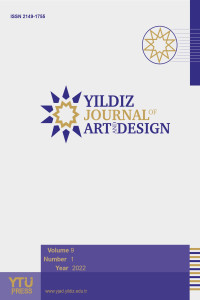TEACHING HISTORY THROUGH ART: THE CASE OF THE CHILDREN’S MUSEUMS OF GREEK CIVILIZATION IN EVIA, GREECE
Anahtar Kelimeler:
-
TEACHING HISTORY THROUGH ART: THE CASE OF THE CHILDREN’S MUSEUMS OF GREEK CIVILIZATION IN EVIA, GREECE
The purpose of the educational project was the development of historical thinking and historical consciousness among primary school students through exhibitions which involved their participation in relevant art creation and play. An experiential learning approach, museum educational techniques and methods of teaching through art, play and material culture were used. Three children’s museums were organized during 2010-2013 at three different primary schools in Evia Island, Greece. During the school year the students of each class were working on a specific historical period of Greece under the supervision of their teacher. After studying museum albums and different history sources, students participated in archaeological simulations, visited museums, and created daily life objects from Ancient Greece and Byzantium using a variety of materials. At the end of the school year, the children organized a children’s museum, open to the local community, where several activities took place. Object construction was used as a method of teaching history. To (re)produce the object, children had to ‘learn’ about it, i.e. gather information regarding the object’s age and its use and also about the culture and the most important events in the relevant historical period. Besides being an innovative way of teaching history, education through art can be used to bridge the gap between school and community life and encourage both historical literacy and creativity development in children
Keywords:
learning through art, experiential learning, history education, museum education innovation,
___
- Brigham, D. L. (1978). Art and Learning: Partners in Educational Process. Studies in Art Education, 19(3), 25-32.
- Dewey, J. (1934). Art as Experience. London: Penguin.
- Mayesky, M. (2014). Creative Activities and Curriculum for Young Children. Stamford: Cengage Learning.
- McCarthy, P. R. & McCarthy, H. M. (2006). When Case Studies Are Not Enough: Integrating Experiential Learning Into Business Curricula. Journal Of Education For Business, 81(4), 201-204.
- Moon, J. (2004). A Handbook of Reflective and Experiential Learning: Theory and Practice. London: Routledge Falmer.
- Nakou, E. (2001). Museums: We, the Objects and the Civilization. Athens: Nisos.
- Başlangıç: 2013
- Yayıncı: Yıldız Teknik Üniversitesi
